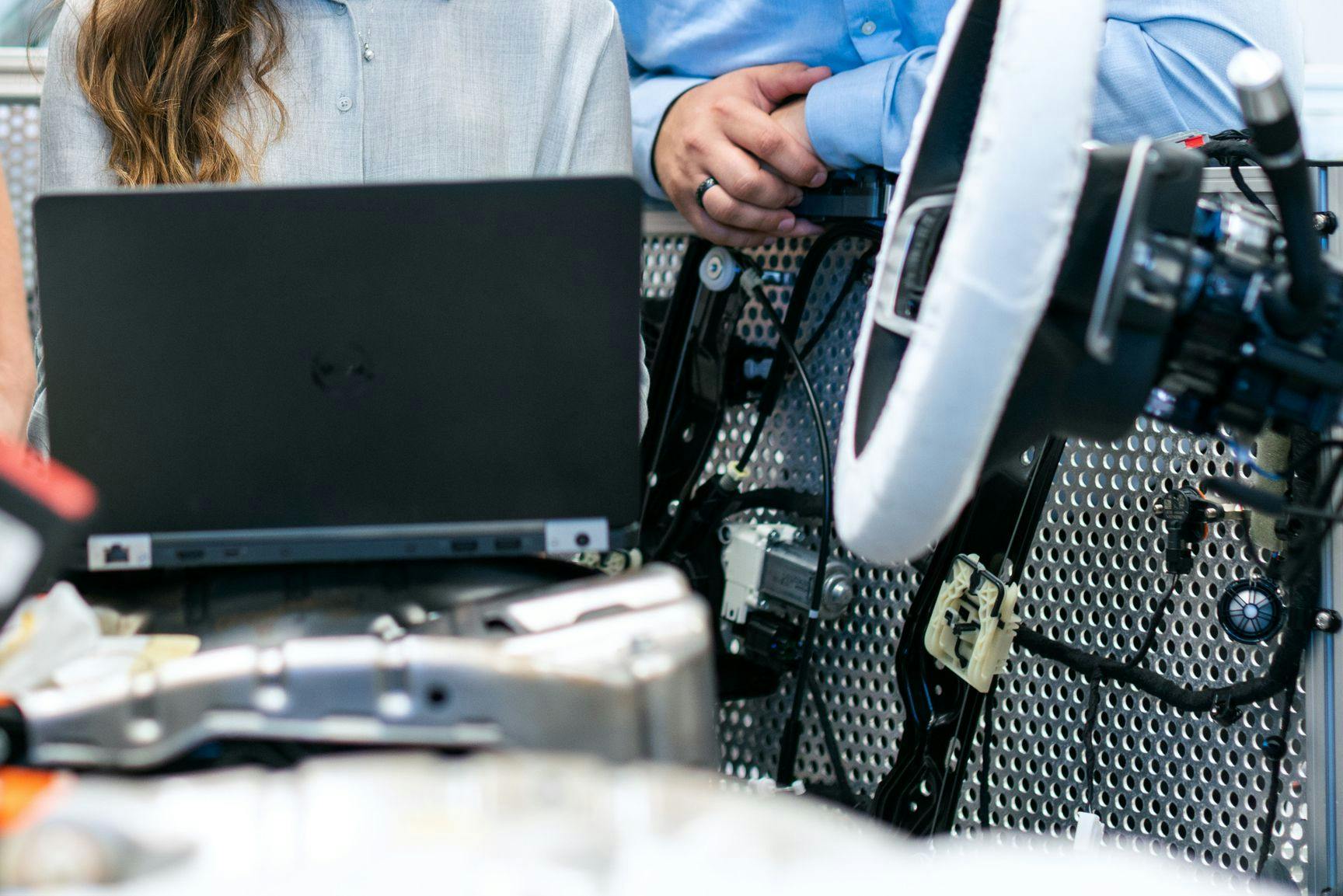An EV battery can be divided into three components:
A cell - a single lithium-ion battery.
The module - multiple cells arranged in a particular form (parallel or series).
The pack - the finished product, assembled by linking multiple modules with thermal sensors and encased in a protective frame.
It's a common misconception that EVs are powered by a single battery of gargantuan size, as in reality, there are hundreds of cells powering the vehicle. For example, the Nissan Leaf battery pack contains 192 cells arranged in 24 modules. But how do these cells gain and retain power?
This is where it gets a bit technical... and chemical... stay with us!
A lithium-ion battery contains two types of electrodes: anode and cathode.
Due to their remarkable ability in storing lithium ions (energy) when charging, these electrodes are the primary reason why lithium-ion batteries are used in EVs. Compared to other battery types (such as nickel-metal hydride), a lithium-ion battery has almost double the energy density (Wh/kg) at a much smaller size. Essentially, this means that EVs can store large amounts of power in a compact battery pack.
Cosmic Fact!
We say compact, but EV battery packs are typically the heaviest single part of an EV. For example, the Tesla Model 3 battery contributes 26% of the total weight, coming in at 480 kg.
When you drive an EV, the cells are technically discharging. As an EV draws upon the power in its battery pack, the stored lithium ions are moved between the two electrodes (from anode to cathode), creating energy in the form of electricity. This is how an EV can move.
When you charge an EV, this process is reversed.
Unfortunately, due to the chemistry of lithium-ion batteries, battery degradation will occur over time and through multiple charging sessions, but the future is bright!
Solid-state batteries are predicted to be the next big thing in the EV evolution. Although in development, solid-state batteries are estimated to far outlast the current lithium-ion battery type, with battery performance remaining at peak optimisation for 30 years! This would also impact the range of an EV, with some reports estimating around a 50% increase.
With many big manufacturers researching solid-state batteries, it shouldn't be too long before they reach the market...








